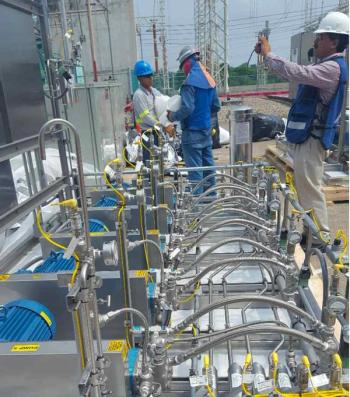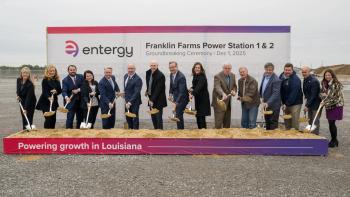
Centrifugal oil and gas
Centrifugal compressors are finding greater usage in Oil and Gas (O&G) applications. Particularly as less traditional forms of gas become more commonplace, they are tending to displace other types of compressors.
“Centrifugal turbocompressors more and more replace screw and/or reciprocating compressors in unconventional gas,” said Ralf Kannefass, Head of Compression & Solutions Turbo Equipment at Siemens. “This can be seen in coal seam gas or shale gas in countries with large coal and gas reserves like Australia.”
Siemens received an order, for example, for the supply of up to 10 compressor trains to Australia Pacific LNG (APLNG) in Queensland, Australia. This will involve the development of coal seam gas fields over a 30-year period and includes construction of upstream gas gathering and processing facilities together with a 450 km main transmission pipeline. Delivery of the compressor trains will start in early 2012.
Each train consists of two compressor skids, one low pressure and one high pressure, with both skids carrying two compressors with variable speed drives. Each train is designed to transport around 84 MMSCFD (million standard cubic feet per day) of gas. Projects and applications such as this are necessitating the introduction of new compressor technology, much of it geared towards ease of maintenance and lowered overall costs.
Siemens has introduced an integrally geared turbocompressor which has won the company several high pressure CO2 projects in the U.S. Originally, invented in the early 1950’s, integrally geared compressors are used in chemical and petrochemical processes, as well as air separation. A new application that is likely to become of major importance is in the compression of CO2 for carbon sequestration and storage (CSS) or enhanced oil recovery (EOR).
“The main features making integrally geared compressors more efficient than axial compressors or in-line centrifugal compressors are: all impellers having an axial flow inlet; an internal gear with a fixed speed drive allowing impellers of different diameter to rotate at their optimum tip speed; and cooling of the air (or CO2) after each compression stage,” said Kannefass.
This Siemens STC-GV line of integrally geared compressors covers a flow range of up to 600,000 m3/h. With the increase in impeller diameter, and thus of the volutes assembled on the gear casing, the diameter of the bull gear increases to the point that the tip speed of the teeth would exceed the admitted load of present material, explained Kannefass. Thus only an improvement in materials would allow a further increase in capacity. The recent extension of the STC-GC series covers 120,000-400,000 m3/h capacities with five casing sizes. Pre-engineering of compressor components has reached 80% and the remaining 20% is covered by customized parts.
“This approach reduces lead time and cost while offering high efficiency,” said Kannefass.
A compression ratio of 6.5 is achieved in three stages, with an Inlet Guide Vane (IGV) on the first stage inlet for flow control. The number of heat exchangers is cut to seven by combining the interstage and after cooler units. A compressor control system known as Scaut CPD safeguards the compressor against improper operation conditions. 50 Hz models are currently available with 60 Hz versions coming out at the end of the year.
“The main reason for this benefit of the integrally geared compressor versus the single-shaft compressor is the higher impeller efficiency with axial flow intake in combination with high head coefficients and the flexibility to adjust the speed for optimum flow coefficients,” said Kannefass. “In addition, the overall number of impellers in a single-shaft compressor is twelve compared to seven on the integrally geared compressors, which is also due to the reduced head coefficients for single-shaft impellers.” Also from Siemens, the STC-ECO is a seal-less compressor for dirty-gas and subsea applications. It features a high-speed induction motor and multistage centrifugal compressor on a single shaft in a single casing. There is no need for auxiliary equipment such as a seal gas system, lube oil system or gearbox.
This is an excerpt from an upcoming article in the Turbomachinery International Handbook which comes out in late October. As well as Siemens, the full article will include the latest compressor technology from the likes of Cameron, Atlas Copco, Dresser-Rand Kawasaki Heavy Industries- Kobe (KHI), Rolls-Royce, Man Diesel & Turbo, Kobelco, GE and Solar Turbines.
Newsletter
Power your knowledge with the latest in turbine technology, engineering advances, and energy solutions—subscribe to Turbomachinery International today.





